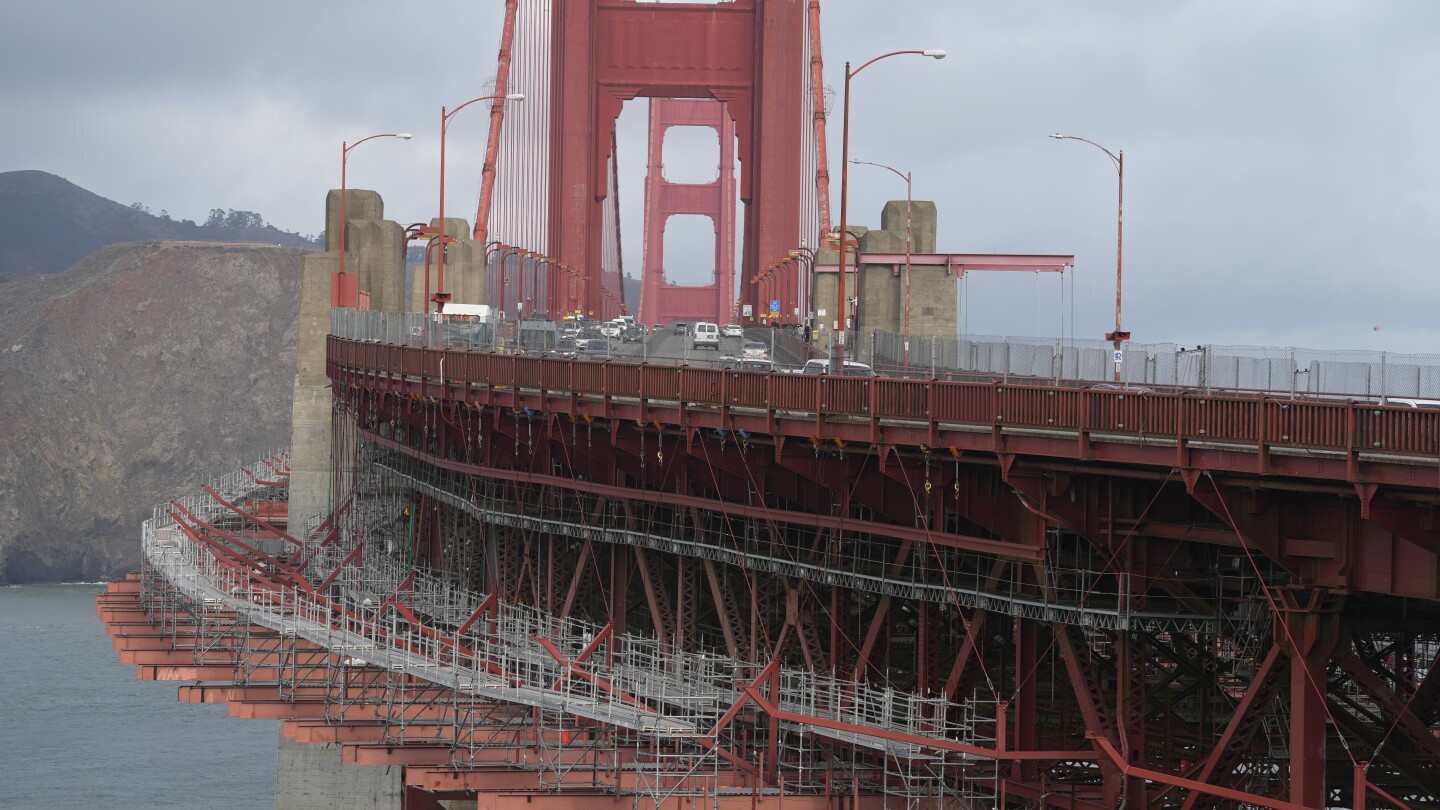Kevin Hines regretted jumping off San Francisco’s Golden Gate Bridge the moment his hands released the rail and he plunged the equivalent of 25 stories into the Pacific Ocean, breaking his back.
Hines miraculously survived his suicide attempt at age 19 in September 2000 as he struggled with bipolar disorder, one of about 40 people who survived after jumping off the bridge.
Hines, his father, and a group of parents who lost their children to suicide at the bridge relentlessly advocated for a solution for two decades, meeting resistance from people who did not want to alter the iconic landmark with its sweeping views of the Pacific Ocean and San Francisco Bay.
On Wednesday, they finally got their wish when officials announced that crews have installed stainless-steel nets on both sides of the 1.7-mile (2.7-kilometer) bridge.
“Had the net been there, I would have been stopped by the police and gotten the help I needed immediately and never broken my back, never shattered three vertebrae, and never been on this path I was on,” said Hines, now a suicide prevention advocate. “I’m so grateful that a small group of like-minded people never gave up on something so important.”
Nearly 2,000 people have plunged to their deaths since the bridge opened in 1937.
City officials approved the project more than a decade ago, and in 2018 work began on the 20-foot-wide (6-meter-wide) stainless steel mesh nets. But the efforts to complete them were repeatedly delayed until now.
The nets — placed 20 feet (6 meters) down from the bridge’s deck — are not visible from cars crossing the bridge. But pedestrians standing by the rails can see them. They were built with marine-grade stainless steel that can withstand the harsh environment that includes salt water, fog and strong winds that often envelop the striking orange structure at the mouth of the San Francisco Bay.



What idiots are downvoting this? The problem isn’t that the bridge is too high. It’s that the people who have suicided there in the past had no access to mental health care. You downvoters are not looking at the root of the problem. You really think all the suicidal people are just gonna magically cure themselves because they installed nets?
The money spent on not only the nets and installing them etc but also the lawmakers that wasted their time coming up with this idea and meeting about it etc etc is ALL a waste of public funds and could have been put to much better use towards the actual problem.
This is just Americans patting themselves on the back pretending they’re doing a good job 👏🏼
You know, the nets aren’t a waste. Preventing the opportunity can help save the life.
Fuck sakes. This is why I said why don’t you go prove it.
https://www.theguardian.com/society/2015/sep/23/barriers-and-safety-nets-at-suicide-hotspots-can-reduce-rates-by-90
Do you have any information that contradicts the effectiveness of barriers at suicide hotspots?
Or is it just your ‘feelings’?
When the article says “Barriers and safety nets at suicide hotspots can reduce rates by 90%”, does it mean at the hotspots or globally? Because if it happens somewhere else it feels like kicking the can down the road…
What sort of argument is this? Obviously if the net catches a fucking person then yeah good job nets. But the root of the problem isn’t people falling off the bridge on accident. It’s people with unaddressed mental health issues wanting to kill themselves. How about we address the mental health aspects instead of just making them jump off a different bridge or shoot themselves or any other of a million different ways to kill yourself. If I really wanna die a net on that specific bridge won’t stop me I’ll just find another way.
How about we do both?
Wouldn’t that be great! Unfortunately,I feel like the us will never get to the point of having any decent socialized healthcare. :(
Not with an attitude like that.